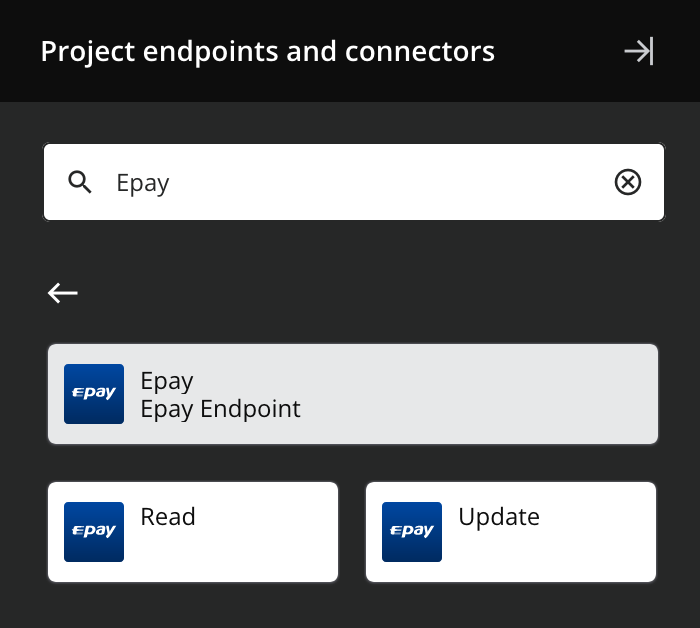Epay connector for Jitterbit Studio
Summary
The Epay connector establishes access to Epay.
The Epay connector provides an interface for creating an Epay connection, the foundation used for generating instances of Epay activities. These activities, once configured, interact with Epay through the connection.
The Epay connector is accessed from the design component palette's Project endpoints and connectors tab (see Design component palette).
Connector overview
This connector is used to first configure an Epay connection. Activity types associated with that connection are then used to create instances of activities that are intended to be used as sources (to provide data in an operation) or targets (to consume data in an operation).
Together, a specific Epay connection and its activities are referred to as an Epay endpoint:

-
Read: Retrieves object data from Epay and is intended to be used as a source in an operation.
-
Update: Updates object data in Epay and is intended to be used as a target in an operation.
Note
This connector is a Connector SDK-based connector, which may be referred to by Jitterbit when communicating changes made to connectors built with the Connector SDK.
Endpoints created with this connector are included in endpoint usage reporting and count toward your license.
Prerequisites and supported API versions
The Epay connector requires the use of an agent version 10.1 or later. These agent versions automatically download the latest version of the connector when required.
Epay's production environment (selected during connection configuration) has controlled security through allowlisting. To allow access to Epay's production environment while using this connector with a private agent, contact Epay and request the inclusion of your private agent IP addresses (located on the Management Console Agents page) in Epay's firewall allowlist. Jitterbit's cloud agents are already allowlisted with Epay.
The Epay connector uses the Epay REST API v1.
Troubleshooting
If you experience issues with the Epay connector, these troubleshooting steps are recommended:
-
Click the Test button in the connection configuration to ensure the connection is successful and to ensure the latest version of the connector is downloaded to the agent (unless using the Disable Auto Connector Update organization policy).
-
Check the operation logs for any information written during execution of the operation.
-
Enable operation debug logging (for cloud agents or for private agents) to generate additional log files and data.
-
If using private agents, you can enable connector verbose logging for this connector by adding this logger configuration entry to your private agent's
logback.xmlfile:<logger name="org.jitterbit.connector.verbose.logging.epay" level="DEBUG"/>For more information on connector verbose logging, see Verbose logging for connectors using Jitterbit private agents.
-
If using private agents, you can check the agent logs for more information.
-
For additional troubleshooting considerations, see Operation troubleshooting.